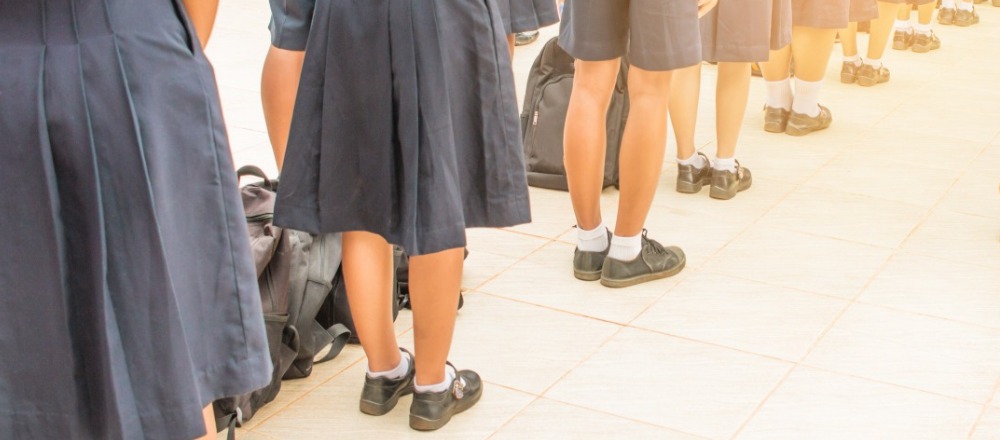Proactive Behaviour Management

Blog Series: Managing Classroom Behaviour
Classroom disruptions can derail lessons, distract students, and make teaching challenging. However, by implementing proactive behaviour management strategies, teachers and support staff can create a structured environment that minimises disruptions and promotes positive behaviour. Rather than constantly reacting to problems, this approach focuses on preventing them by establishing clear expectations, building positive relationships, and creating a consistent classroom routine.
Why Proactive Behaviour Management is Important
Proactive behaviour management is about being preventative rather than reactive. It gives teachers the tools to address potential behavioural issues before they occur, fostering a classroom environment where students understand what is expected of them and feel supported in meeting those expectations. This approach not only reduces misbehaviour but also enhances student engagement, reduces stress for teachers, and creates a more positive learning experience.
Key Techniques for Proactive Behaviour Management
Establish Clear Expectations Early On At the start of the school year, or whenever a new term begins, it’s important to set clear behaviour expectations with students. Be explicit about the rules, routines, and consequences, and involve students in discussions about classroom behaviour. By understanding the "why" behind rules, students are more likely to adhere to them.
Example: Use visual aids or posters to outline classroom rules, ensuring they are visible and easy to understand for all age groups.
Create Consistent Routines Consistency is key to preventing disruptions. When students know what to expect each day, it reduces uncertainty and anxiety, making them feel more secure in the classroom environment. Routines help students transition smoothly between activities and maintain focus, minimising opportunities for disruptive behaviour.
Example: Establish a predictable routine for transitioning between lessons, using signals like a bell or specific hand gestures to indicate when it’s time to move on to the next task.
Build Positive Teacher-Student Relationships When students feel respected and valued, they are more likely to engage positively in the classroom. Building a relationship based on trust and mutual respect makes students more motivated to meet behavioural expectations. Take time to understand each student’s individual needs, strengths, and challenges, which will help in preemptively addressing potential behaviour issues.
Example: Greet students at the door each day to establish a positive connection and set the tone for the lesson ahead.
Use Positive Reinforcement Instead of focusing solely on correcting negative behaviour, actively recognise and reward positive actions. Positive reinforcement encourages students to continue displaying good behaviour and motivates others to follow suit. This could be through verbal praise, reward systems, or class incentives.
Example: Implement a points or star chart system where students can earn rewards for consistently following classroom rules.
Engage Students in Lesson Planning Keeping students actively engaged in learning reduces the likelihood of disruptions. Boredom and frustration are common triggers for misbehaviour, so it’s essential to create engaging, interactive lessons that cater to different learning styles. Give students opportunities to take ownership of their learning through collaborative projects, group work, or self-directed learning tasks.
Example: Use differentiated instruction to tailor lessons to varying student abilities, ensuring all students are challenged but not overwhelmed.
Teach Social and Emotional Skills Many disruptive behaviours stem from students struggling to manage their emotions or navigate social interactions. By teaching social-emotional skills, such as empathy, emotional regulation, and conflict resolution, students are better equipped to handle frustrations and interactions with their peers in a positive way.
Example: Integrate short lessons on emotional intelligence into the curriculum, focusing on topics like identifying emotions, managing anger, and developing empathy.
Anticipate and Redirect Misbehaviour Being attuned to students’ behaviours and moods can help teachers spot early signs of potential disruptions. If a student seems restless or upset, redirect their energy before the behaviour escalates. This can be done subtly, through a change in activity, movement breaks, or a quiet word of encouragement.
Example: If a student is becoming distracted during a task, ask them to help with a classroom responsibility or give them a brief movement break to refocus their attention.
Maintain a Calm Classroom Environment The tone of the classroom can have a significant impact on student behaviour. Creating a calm, orderly environment reduces overstimulation and helps students concentrate. Simple adjustments, such as managing noise levels, creating a clutter-free space, and maintaining a calm teacher demeanour, contribute to this.
Example: Use calming background music during individual work time to help students stay focused and maintain a quiet atmosphere.
Use Visual and Verbal Cues Visual and verbal cues can remind students of the expected behaviour without needing to pause the lesson or reprimand. This can include hand signals, traffic light systems, or short verbal prompts to redirect attention.
Example: Use a “quiet signal” such as raising your hand to silently indicate that it’s time for students to settle down without stopping the flow of the lesson.
Review and Adjust Behaviour Plans Regularly Behaviour management is an ongoing process. Regularly review what’s working in your classroom and adjust as necessary. Involve students in reflecting on behaviour patterns and discuss ways to improve as a group. Adjust strategies to suit the needs of individual students or the whole class over time.
Example: Hold brief weekly meetings with the class to discuss what went well behaviour-wise and what could be improved. This fosters a sense of shared responsibility.
Conclusion
Proactive behaviour management is about laying the groundwork for positive classroom experiences by anticipating and preventing disruptions before they arise. By establishing clear expectations, creating structured routines, and building positive relationships, teachers and support staff can foster an environment where students feel supported, engaged, and ready to learn. These proactive techniques not only reduce classroom misbehaviour but also promote a more positive and productive learning environment for everyone involved.
Keywords: proactive behaviour management, classroom disruptions, preventing misbehaviour, classroom routines, student expectations, positive behaviour strategies, classroom management techniques, teacher strategies for behaviour, creating classroom structure, preventing disruptive behaviour





